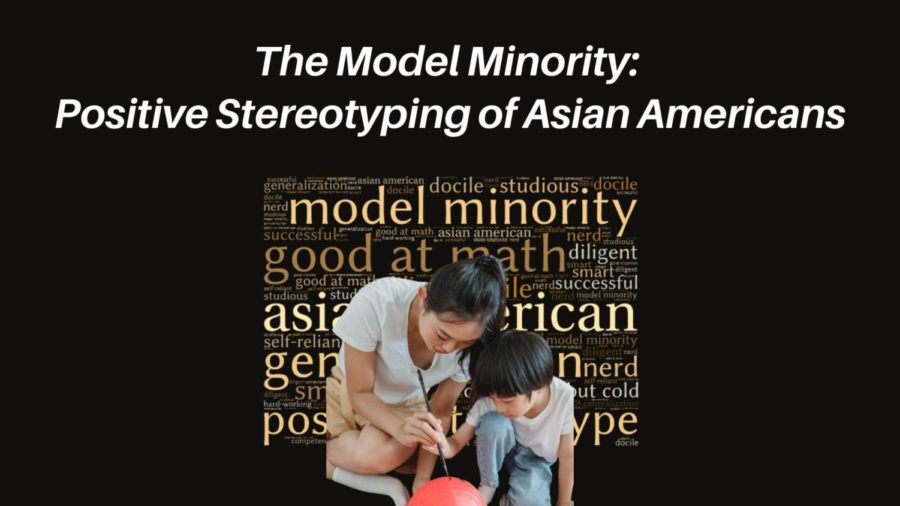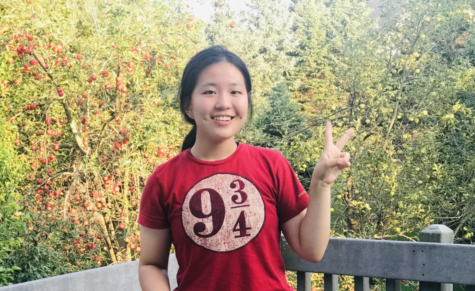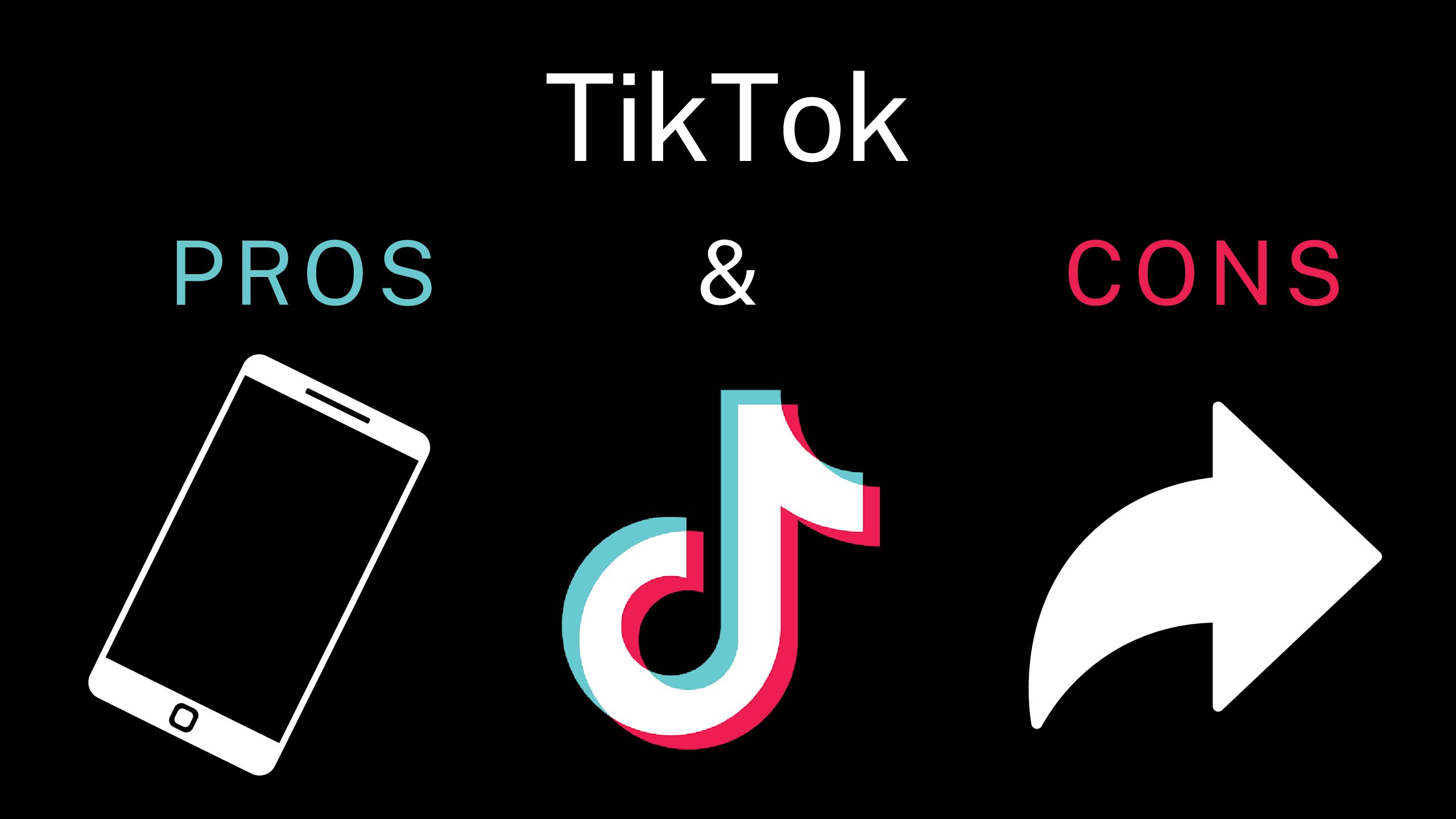The Model Minority: Positive Stereotyping of Asian Americans
A stereotype is a generalized belief about a certain category of people.
March 28, 2022
The smart, the diligent, the successful. The “Model Minority.”
Stereotypes like these have been thrown around to Asian Americans, both in jest and in complete seriousness.
These stereotypes are generally considered to be “positive,” compared to other more blatantly racist stereotypes. After all, having a stereotype such as “smart” or “diligent” associated with your race doesn’t seem like a bad thing, does it? Why does anyone have an issue with being seen as successful or diligent? It isn’t nearly as offensive as some other more obviously “negative” and discriminatory prejudices associated with other races. But although outwardly it may seem harmless, even good, the truth is not nearly as pleasant.
Plenty of positive stereotypes exist, despite the fact that the term itself sounds like an oxymoron. Some examples of this are how women are positively stereotyped to be warm, Black Americans are positively stereotyped as athletic, and Asian Americans are positively stereotyped as the “Model Minority” as all of these traits are (albeit subjectively) considered positive. So how can something as innocuous-sounding as a positive stereotype be negative?
Well, a stereotype is a generalized belief about a certain category of people. So stereotypes are, by definition, generalizations. A “positive” stereotype is just the same thing as a “negative” stereotype, just one generalizes people with a subjectively positive connotation and the other with a negative one.
According to PyschologyToday and Siy & Cheryan, 2013, all stereotypes, no matter whether positive or negative, lump an individual into a group of people. When a stereotype is applied to a person, it removes some of their individuality. Seeing someone as only a member of a group or undifferentiated from other members of the group only adds to the person’s sense that they are being depersonalized. Many times, it leads them to dislike or negatively impact their relationship with the person who made the comment in the first place.
And according to the Journal of Personality and Social Psychology, a group is typically associated with both positive and negative stereotypes; for example, women are positively stereotyped as warm but negatively stereotyped as weak, Black Americans are positively stereotyped as athletic but negatively stereotyped as unintelligent, and Asian Americans are positively stereotyped as competent but negatively stereotyped as cold. A person who is targeted by a positive stereotype linked with their group may believe that the stereotyper also believes they possess the group’s negative traits.
These outwardly positive stereotypes are a vicious thing, because they are not considered as serious or nearly as offensive as negative ones, leading many to disregard them and not take them as seriously.
They are sly and go unnoticed, so many times we just don’t understand how much of an impact it has. These stereotypes have been so deeply ingrained and embedded into my life that it’s impossible to tell where the stereotypes guiding my life stop and I start, going much further past an offhand joke about how “all Asians are smart.”
These positive stereotypes create a standard for Asian Americans; an expectation that we are naturally good at math, science and technology — we are hard-working, self-reliant, and successful… ones that we fuel ourselves. Many of my Asian American friends, classmates, and acquaintances have all played a part in perpetuating these “positive” stereotypes regarding our race, including me. We all want to succeed, and seeing my Asian American friends and peers, I felt the pressure to improve, to achieve, to fit into my stereotypes further.
The truth of it all then becomes, if you don’t fit into the standard, then you must be below it. We don’t want to be the one left behind, so we all become even more competitive and work harder to make up for it. Because of the pressure to do well, live up to your expectations, and become someone successful, I was pushed more to do well alongside my Asian American classmates – and it felt like we were all trying to one-up each other with a new skill, or award, or achievement.
The expectation others have of us, but most importantly, we have of ourselves, is warped because of stereotyping. It’s a bitter cycle and a toxic echo chamber of pressure, each Asian American family pushing their child to learn more, take more classes, advance further than needed because everyone else is, too — and again, who wants their child to fall behind? So since practically everyone was doing it, the standard became raised higher and higher, further perpetuating all of those stereotypes.
Of course, this is from my own personal experiences playing into the stereotype and my observations about the people around me; there are many Asian Americans who do not meet this ridiculous “standard” we’ve all set for ourselves that are not less intelligent, hardworking, or talented at all.
I was not born with the power to naturally conjure up sentences, to solve equations, to comprehend tough questions. I acquired all this knowledge because I learned it, whether in school or thanks to my many extracurricular classes, and to say that it’s only because I’m Asian is invalidating the work I put in to achieve it.
The idea of positive stereotyping is very closely tied to the phenomenon of the “Model Minority.”
The model minority, typically applied to Asian Americans, is described as a minority group whose members are regarded to have achieved a higher degree of socioeconomic success than the general population. This stereotype has been most frequently used to pit people of color against one another and establishes a systematic racial hierarchy.
This, paired with the concept of all the “positive” sterotypes of Asian Americans, makes it easier to ignore and be ignorant of the discrimination and hardship that Asian Americans face (especially with the COVID-19 pandemic) — Many times it is used to downplay racism and dismiss claims of white privilege.
Discrimination and the such are misunderstood or dismissed with the premise that racism directed at Asian Americans is less important or severe than racism directed at other minority races. Because of the more prominent positive stereotypes that are associated with Asian Americans, many people believe that they encounter no or little racial discrimination or social challenges in American society.
This is completely untrue. According to many Pew Research Center surveys, 32 percent of Asian Americans fear threats and physical attacks. Eight in ten of Asian Americans say violence against them in the United States is increasing, and nearly half have experienced an incident tied to their racial or ethnic background since the pandemic began.
Also, according to The Hill, “The Model Minority myth is largely based on aggregate statistics showing higher median incomes and educational attainment for Asian Americans over other racial and ethnic groups, including whites.”
The Asian American community is made up of so many different ethnic groups that when broken down, a very different portrait of the ‘Model Minority’ emerges. Because believe it or not, Asian Americans are not just made up of Japanese, Chinese and Korean Americans (the success stories you most usually see). The poverty rate among Nepalese Americans is 21 percent higher than the official poverty rate, and Hmong Americans are 20 percent less likely to have a bachelor’s degree or more than the average American.
But in contrast, 70 percent of Indian-Americans have at least a bachelor degree, and their average household income is 80 percent higher than the American average. Since there is such a diverse range of ethnicities, people and statistics involved with Asian Americans, coining the term “Model Minority” for such a large group of people is simply not accurate and extremely harmful.
Positive or negative stereotypes, Model minority or not, remember to treat people as individuals, instead of only being a member of a community. Bias is many times unconscious and will warp your view of someone, but you can still make a conscious effort to treat people the same, no matter what they look like or what their race is — because both positive and negative stereotypes can be hurtful and many times also simply incorrect.









Mr. Engels • May 1, 2022 at 10:09 am
Wow Ashley! What a thoughtful piece. Such an impressive combination of thoughts and experiences that were deeply personal alongside such a thorough command of facts and statistics.